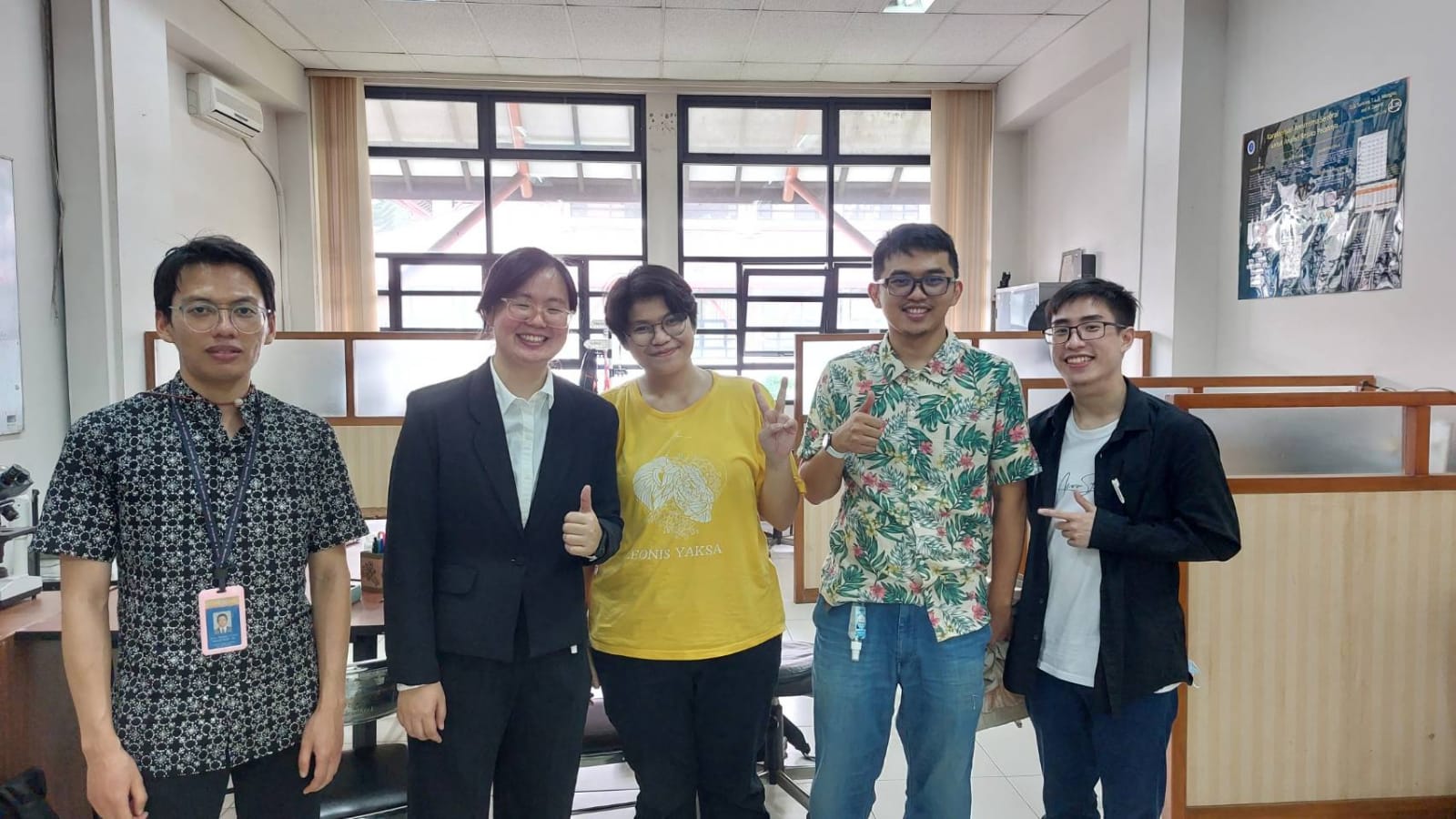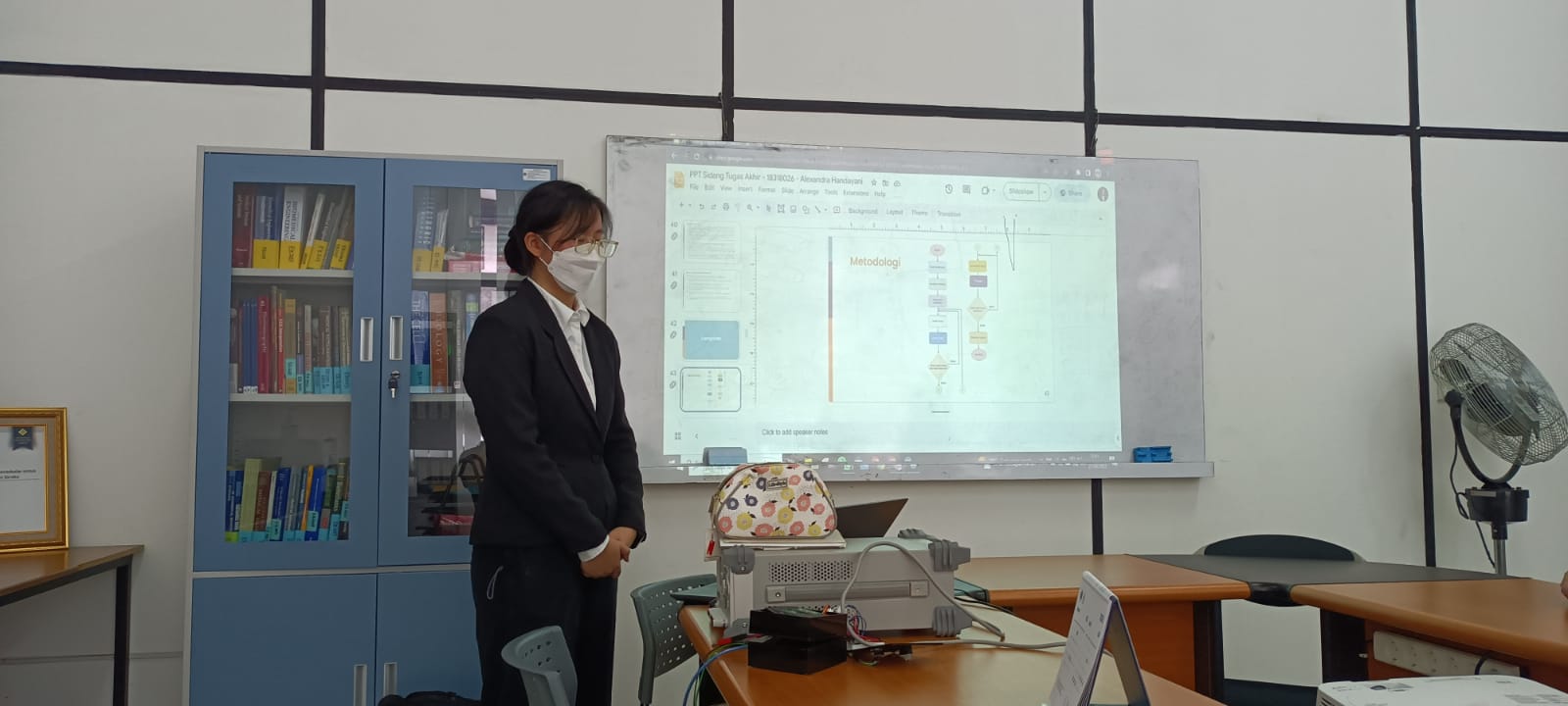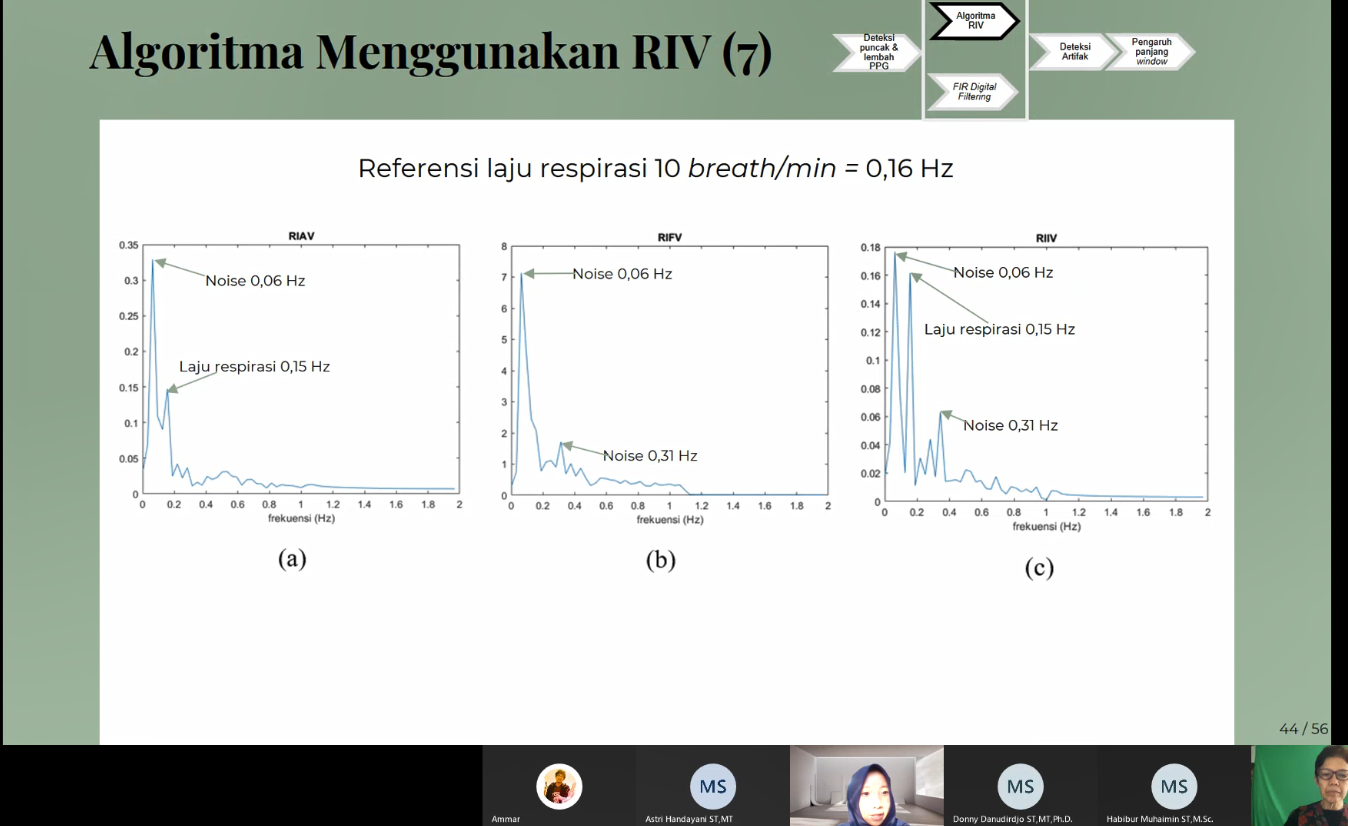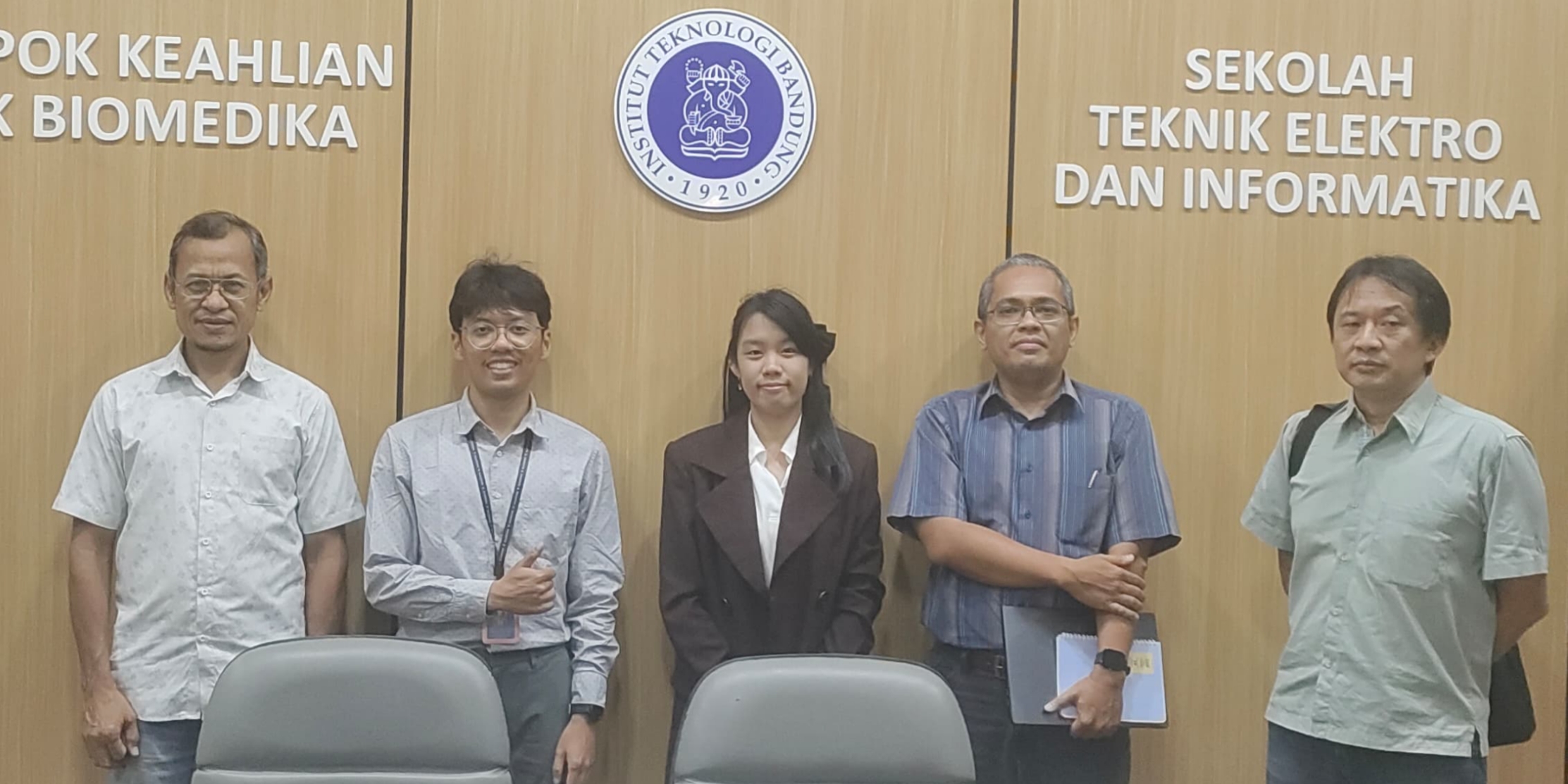I have supervised over 20 students on their undergraduate thesis projects. Here are some of them.
Nirmala Dewi Kusuma
Nirmala accepted the topic that I would like to explore in the next few years: hearing aids for the deaf. A cool project where she started the modelling work in a controlled, noisy environment, i.e., an indoor room. She chose a deep learning method to separate the sounds for speech enhancement. She is always confident and communicative. In 2025, she is with BCA as a testing analyst, part of the quality assurance team.
EVALUATION AND DEVELOPMENT OF SPEECH SIGNAL PROCESSING MIXED BY AN INTERFERER USING DEEP LEARNING APPROACH FOR HEARING AID
by Nirmala Dewi Kusuma
According to the WHO, by 2050, it is estimated that more than 700 million people will experience hearing loss. However, only a few of these individuals use hearing aids. One reason for this is that these devices often do not provide much benefit, especially in noisy environments. Hearing aids are no longer just for amplifying sound but also for speech enhancement, which aims to separate the target speech signal from other speech or environmental noise. Conventional methods using weighting factors, such as spectral subtraction or Wiener filtering, are not optimal for handling non-stationary interferers. Currently, deep learning methods are being extensively developed for speech signal separation. The main challenges with these methods often stem from computational and complexity issues. One of the methods used in this research is MC-ConvTasNet. This study evaluates the model using the CEC1 dataset, which provides scenarios using a binaural hearing model approach, multi-channel settings, static conditions, two types of interferers, and various SNR levels. To assess speech intelligibility, analysis is performed using the MBSTOI metric. The results show that among the various combinations of the number of filters in the dilated-convolution block stack (H) and the number of filters in the bottleneck (B), the best combination is found to be 256 and 128. Higher values of H and B do not yield better performance. Reducing complexity through H and B by 94,3% results in a 10,9% decrease in MBSTOI performance. The comparison between training and validation loss shows that using early stopping can prevent overfitting, although it may lead to a decrease in MBSTOI performance. To compensate for this decline, variations of dropout layers were added at different positions in the developed model, along with modifications to the encoder-decoder. Dropout layers can reduce the gap between training and validation loss, thus lowering test loss. The decoder modification in the signal separation block was done by combining spatial features from 6 channels with spectral features.

 Alexandra Handayani
Alexandra Handayani
Alexandra or Sandra worked on the estimation of three vital signs from a pulse oximeter. Her research was all about developing the pulse oximeter, transforming from paper to breadboard circuit, to PCB covered by casing and display, and embedding it with algorithms capable of estimating the heart rate, respiratory rate, and oxygen saturation at once; covering the cycle of product development solely by her, a single fighter indeed. She, more importantly, is diligent and pleasant to work with. As of 2024, she was pursuing her master’s degree at KTH, Sweden. She will have a great career there or wherever she goes.
FINGER-BASED PULSE OXIMETER DESIGN TO ESTIMATE THREE VITAL SIGNS AT ONCE: OXYGEN SATURATION, HEART RATE, AND RESPIRATORY RATE
by Alexandra Handayani
The COVID-19 pandemic which has been happening since 2020 is causing the need for people to do self-isolation and to maintain their physical conditions by themselves. One portable solution which can be used to monitor one’s health condition by themselves is pulse oximeter. Pulse oximeter itself uses two photoplethysmogram signals that come from two different light wavelengths: red and infrared. Moreover, the signal that has been successfully recorded will then be processed to estimate 3 vital signs: heart rate (HR), respiratory rate (RR), and oxygen saturation (SpO2). Currently, the majority of commercial pulse oximeter products can only estimate heart rate and oxygen saturation, and only a few products have the capability to estimate respiratory rate too. The design in this final project is intended to give an end-to-end overview of the design process and the making of finger-based pulse oximeter that has the ability to estimate three vital signs. Knowing all the process itself is important for manufacturability in wider regions and also for future development. The final pulse oximeter design for this final project itself is using two phototransistors with narrow sensitivity range of light spectrum, specified only for 660 nm wavelength (red) and 940 nm wavelength (infrared). Both phototransistors will then be integrated with a preprocessing circuit, LED circuit, display module, and Arduino Nano as the microcontroller. The result value will then be tested from two aspects: the quality of the PPG signal itself and the estimation value/result for the all of the three vital signs. All of the results will then be evaluated and compared with BIOPAC set modules and commercial pulse oximeter.
 Nurafifah Fikriastuti
Nurafifah Fikriastuti
During the COVID-19 lockdown, we worked remotely without seeing each other at all. I’ve never seen her face except at the thesis defence when she turned on the camera. That’s the first time I saw her. Reporting every week, Afifah learnt the challenges of her research in respiratory estimation from PPG. She performed really well both in the learning process and in the outcome. She published a conference paper. Now I have lost her contact, but hopefully she is doing OK.
RESPIRATORY RATE ESTIMATION USING THREE RESPIRATORY-INDUCED VARIATIONS ON PHOTOPLETHYSMOGRAM
by Nurafifah Fikriastuti
Respiratory rate (RR) is one of the important respiratory monitoring parameters as an early indicator of critical illness in patients. Respiratory rate is usually obtained using capnography, impedance pneumography (IP), or electrocardiogram (ECG). Respiratory rate can also be obtained using photoplethysmograph (PPG) due to the effect of the respiratory process on PPG signals on PPG signals. Therefore, respiratory rate monitoring can be done comfortably with an inexpensive portable device called pulse oximeters. Based on the previous research, the challenge in respiratory rate estimation using PPG is noise. So, there must be a noise handling mechanism in the algorithm. In this final project, the algorithm was designed using the three respiratory-induced variations in PPG signals. We also observe the influence of the length of the PPG window on the algorithm performance. The length of the PPG window affects the algorithm’s performance, the amount of estimated respiratory rates, and the algorithm’s ability to detect a change of RR in a periode of respiration.

